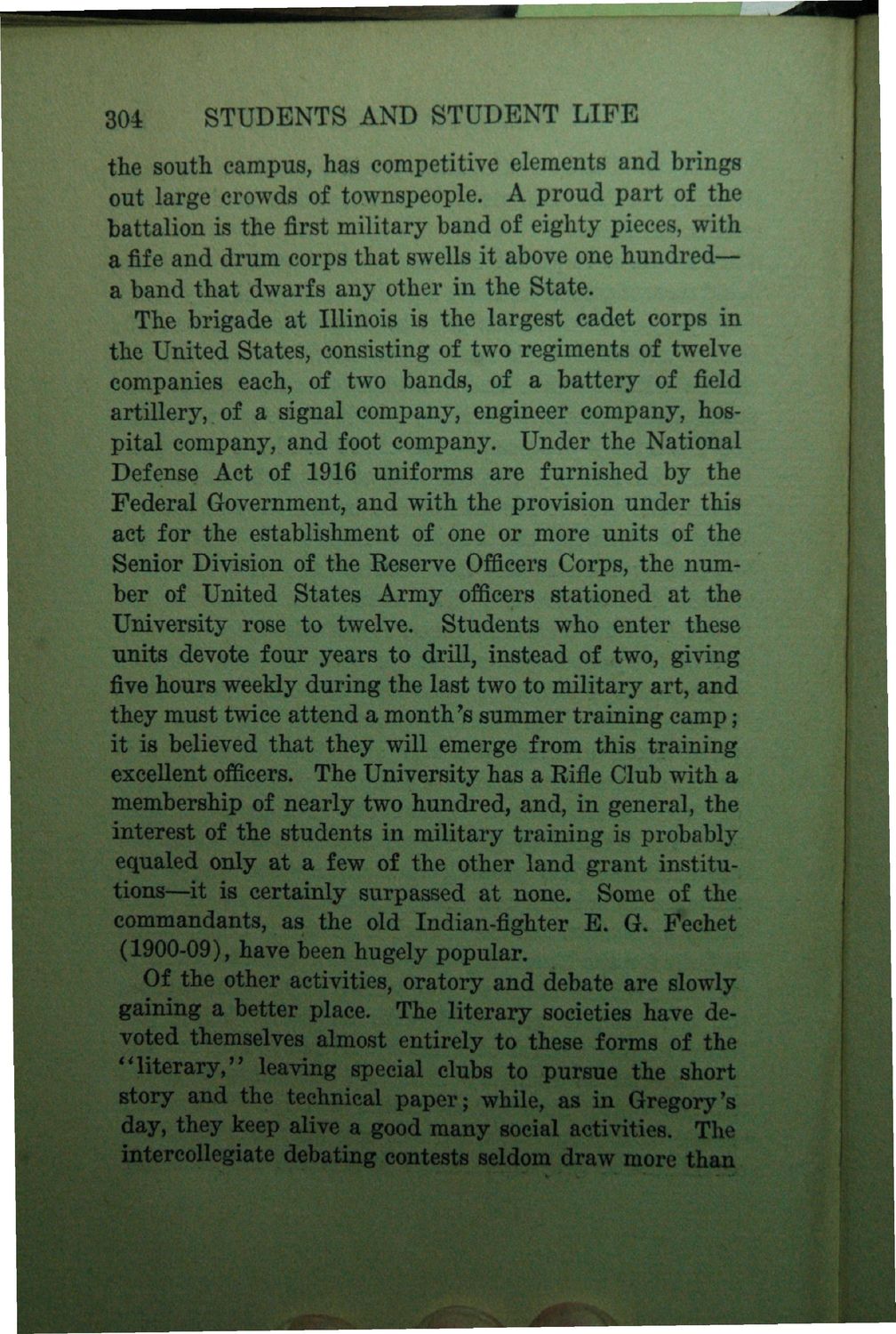| |
| |
Caption: Book - History of the University (Nevins)
This is a reduced-resolution page image for fast online browsing.

EXTRACTED TEXT FROM PAGE:
304 STUDENTS AND STUDENT L I F E the south campus, has competitive elements and brings out large crowds of townspeople. A proud part of the battalion is the first military band of eighty pieces, with a fife and drum corps that swells it above one hundred— a band that dwarfs any other in the State. The brigade at Illinois is the largest cadet corps in the United States, consisting of two regiments of twelve companies each, of two bands, of a battery of field artillery, of a signal company, engineer company, hospital company, and foot company. Under the National Defense Act of 1916 uniforms are furnished by the Federal Government, and with the provision under this act for the establishment of one or more units of the Senior Division of the Reserve Officers Corps, the number of United States Army officers stationed at the University rose to twelve. Students who enter these units devote four years to drill, instead of two, giving five hours weekly during the last two to military art, and they must twice attend a month's summer training camp; it is believed that they will emerge from this training excellent officers. The University has a Rifle Club with a membership of nearly two hundred, and, in general, the interest of the students in military training is probably equaled only at a few of the other land grant institutions—it is certainly surpassed at none. Some of the commandants, as the old Indian-fighter E. G. 5*echet (1900-09), have been hugely popular. Of the other activities, oratory and debate are slowly gaining a better place. The literary societies have devoted themselves almost entirely to these forms of the "literary," leaving special clubs to pursue the short story and the technical paper; while, as in Gregory's day, they keep alive a good many social activities. The intercollegiate debating contests seldom draw more than
| |